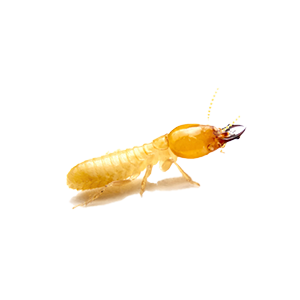To Swat or to Save?

You’re out in the garden, sweat dripping down your face, dirt on your hands, when you hear that dangerous buzzing by your ear. A hint of yellow flits before your eyes then zips past your face.
As you begin hightailing it to the porch, you look back one last time to try to catch a glimpse of the beast that’s chasing you.
“Is that a hornet?” “Wait no, maybe a yellow jacket?” “Do I even know what a bumble bee looks like…?”
The real question in this scenario becomes, what is it, and then, to swat or to save?
Confused?
Don’t worry, AAA Exterminating has answers for you! As a pest control company in Indianapolis, IN with more than 65 years of experience, AAA has the lowdown on how to decipher between these winged pests!
Before you pick up a rolled up magazine (or whatever your weapon of choice), learn about which of these flying insects are docile and which ones can go!
Save the Bees
We bet you’ve heard about the recent crisis concerning bee populations throughout the world. Beekeepers are seeing an alarming rate of colony deaths, which impacts everything from agriculture to other animal species!
Without bees carrying pollen to our plants and crops, large scale agriculture becomes more expensive, food becomes more limited, and problems can arise.
By knowing how to keep bees happy, while eliminating their not-so-friendly relatives, we can all sleep a little easier at night…
…Let’s get to identifying!
YELLOW JACKETS, RUN FOR IT

It’s like something out of a horror movie…
You’re happy as a clam one minute, tooling around in your garden, when you strike a strange clod of dirt. Oh gosh, that’s no clod of dirt! You just struck a yellow jacket hive…and they’re all coming for you…
Okay, okay, we’ll help you identify them!
Body Type:
Yellow jackets are shorter and a tad thicker than other wasp species, complete with their notorious black and yellow striping. Their bodies are pinched between the thorax and abdomen and they tuck their legs underneath their body when they fly.
Food Sources:
These pests prefer protein or tempting sweet treats like honeydew, a spilled soda, or other insects like flies.
Aggressive or Docile?
Yellow jackets are extremely territorial and will swarm and attack to protect their nests. They also have a thorn-like stinger which can sting repeatedly. Since a wasp can sting more than once, they are very dangerous—especially to those who are sensitive to insect stings and bites.
European Hornets

You’re working in your garden again (you never learn, do you?), when you glance up and see a nest in the hollowed-out portion of the tree that graces the edge of your plot. That’s when you see them—large insects with pale faces and brown and yellow stripes…uh-oh, another attack?
Breathe out!
Though European hornets can be aggressive when defending their nests, they typically leave people alone. Let’s learn more about them!
Body Type:
European hornets are much larger than their bumble bee or yellow jacket counterparts. They measure about an inch in length and are brown and yellow complete with a pinched thorax. They are known for their pale faces and large antennae.
Food Sources:
Hornets are attracted to everything sweet! They enjoy those sugary drinks and food that you toss in your trash, and they also like to snack on tree sap. Since hornets are large, they prey on insects like caterpillars and grasshoppers.
Aggressive or Docile?
Hornets have the ability to sting repeatedly, which puts those allergic to stinging insects at risk. However, unlike yellow jackets, hornets are usually docile unless their hive is attacked or you’re standing too close to their food source.
WASP— Oh Wait, Just a Bumble Bee

It’s a lazy day, you’re outside for a little breather, when an insect lazily floats past you. You tense up, preparing to quickly dart, but the insect never turns back…okay, that’s got to be a bumble bee.
Body Type:
Bumble bees are typically round and fuzzy with classic yellow and black striping. They can either have red, white, or yellow tails. These bees have fuzzy legs to which pollen sticks—allowing them to pollinate plants as they land on crops and flowers.
Food Sources:
Bumble bees primarily eat pollen and nectar from flowers. With the energy given to them by the flowers, they are able to produce honey by mixing their saliva with the pollen.
Aggressive or Docile?
Bumble bees are extremely docile, and only female bees can sting. Though they have the ability to sting multiple times, they do so only when threatened. For those with allergies, a sting could be deadly—remain in considerable distance from a hive if allergic.
If you want to help conserve bumble bee populations, a number of steps can be taken:
- Avoid using pesticides on your flowers and gardens! Pesticides can prove fatal when ingested by bumble bees—look for eco-friendly alternative options.
- Plant groups of flowers close together. Bees are especially attracted to daisies, zinnias, asters, and more.
- Avoid raking or tilling your yard until mid-April. Many bees hibernate underground for the winter, and raking can destroy nests and kill bees.
Help Me Remove Wasps and Hornets Safely
Now that you can properly identify yellow jackets, hornets, and bees, you know what to avoid while gardening!
Need help removing that wasp nest?
You need to contact an expert pest control company in Indianapolis, IN! For more information on keeping your home free from the threat of wasps and hornets, Call AAA Exterminating at (317) 773-3797. Free quotes are always quick and easy!








